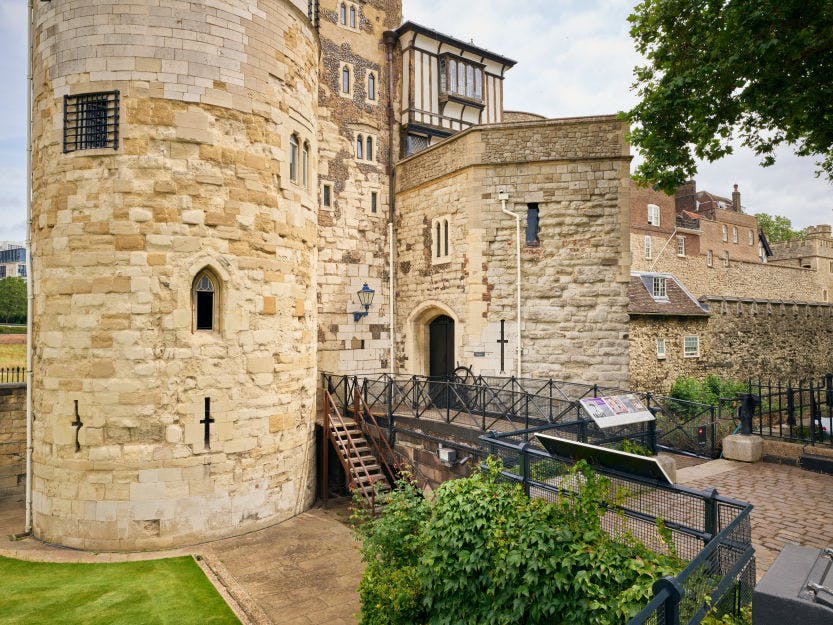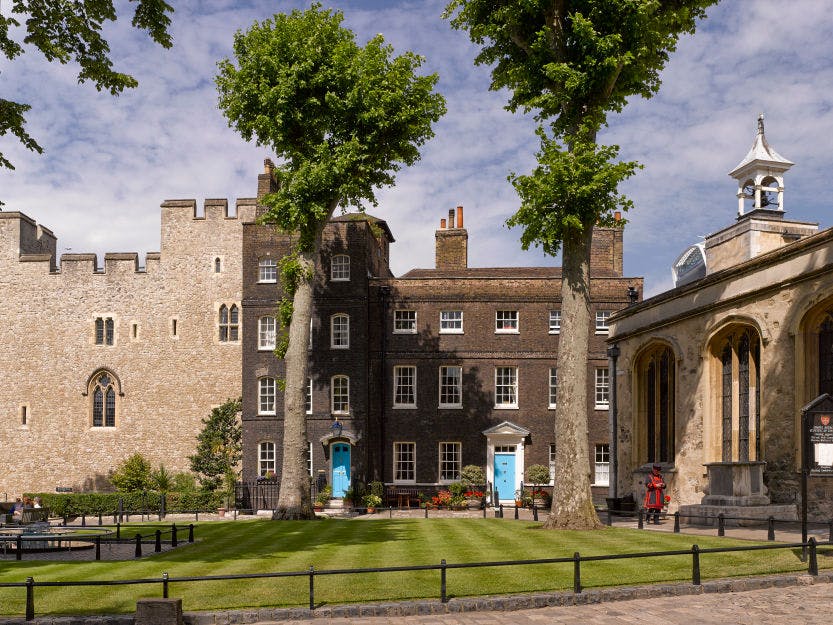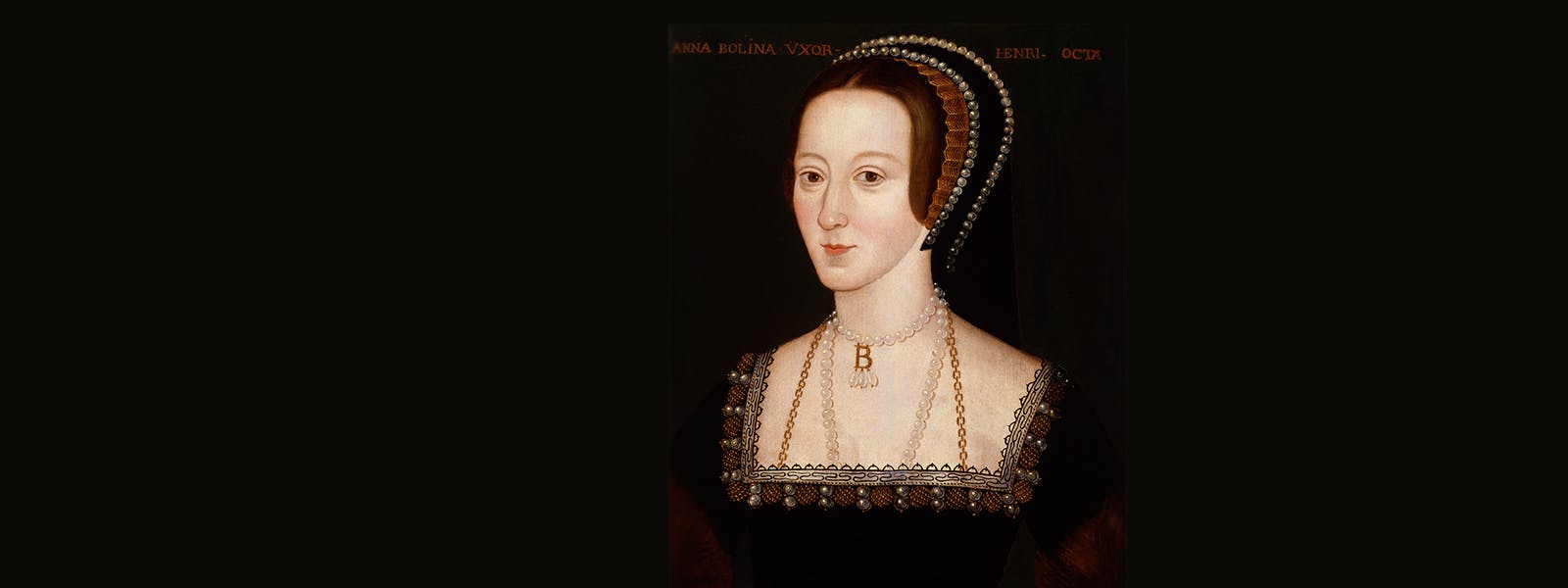
She failed to give Henry VIII a son and paid with her life
Anne Boleyn (c.1500-1536) is one of the most intriguing figures in British history. Her love-match with Henry VIII and her subsequent execution at the Tower of London after only three years of marriage have inspired dozens of books and films.
More importantly, Anne's marriage to Henry resulted in the birth of a future queen, Elizabeth I. Elizabeth would later become one of England's most famous monarchs.
Was Anne a ruthless schemer or was her death simply a tragic consequence of court politics?
Where is Anne Boleyn buried?
The closest we can get to Anne today is by visiting her final resting place; she is buried in the Chapel Royal of St Peter ad Vincula at the Tower of London.
Anne Boleyn's childhood
Anne was born in about 1501 (we don’t know exactly when). Her father, Sir Thomas Boleyn, was a respected courtier. Her mother, Elizabeth Howard, was the daughter of Sir Thomas Howard, 2nd Duke of Norfolk, one of the most powerful men in the country. She spent her childhood at Hever Castle in Kent.
Early years in France
In 1513, Thomas Boleyn sent Anne to the court of Margaret of Austria, and then to the French court, originally as a companion to Henry VIII’s sister, Mary, who was married to Louis XII. After Louis’ death in 1515, Anne stayed in France for seven years in the household of Queen Claude, wife of the new king, Francis I.
For an ambitious family like the Boleyns, this was a wonderful opportunity for their daughter to learn all the skills and manners expected of a lady at court, and to form a close connection with the French and English royal families. Her French education made Anne stand out on her return to England: she could sing, play musical instruments and dance, and introduced new French fashions at court.
Anne and Mary Boleyn
By 1522, Anne had returned to England. Anne’s married sister Mary had become Henry’s mistress, and possibly remained so until 1525.
Both Mary and Anne became ladies-in-waiting to Henry’s first wife, Katherine of Aragon.

Image: Anne Boleyn by an unknown artist, late 16th century. Impartial descriptions of Anne are hard to find: she appears to have had dark hair and eyes and a slender neck, but no undisputed portrait of her from her lifetime has survived. © National Portrait Gallery, London.
Henry VIII meets Anne Boleyn
Henry VIII may have first encountered Anne Boleyn in March 1522. Anne was playing one of the lead roles, 'Perseverance', in a court masque at Thomas Wolsey’s Whitehall Palace.
Anne was not short of admirers. Henry Percy, later Earl of Northumberland, and the poet Thomas Wyatt both courted her. These dalliances seem to have remained within the accepted boundaries of flirtatious 'courtly love' and romantic poetry.

Image: Cardinal Wolsey and courtiers with, on the right, the King meeting Anne Boleyn at the Cardinal's residence, York Place, later Whitehall Palace, re-imagined by the artist James Stephanoff in 1832. © Royal Collection Trust / © Her Majesty Queen Elizabeth II 2017
Henry and Anne's courtship
In 1526, the King’s interest in Anne significantly upped the stakes.
Henry VIII’s long marriage to Katherine of Aragon had produced only one surviving child, Princess Mary. Henry was becoming increasingly desperate for a legitimate son and heir to secure the future of the Tudor dynasty.
Either driven by her own virtue or ambition, or by her scheming relatives, and aware of the King’s dynastic dilemma, Anne refused to become a royal mistress and held out for the possibility of marriage.
Anne Receives love letters from Henry VIII
In the Vatican Library, a series of 17 letters survives which detail Henry’s growing infatuation with Anne over the next couple of years.
One, awkwardly and explicitly, declared that the King’s heart belonged to Anne alone, and that he hoped his body would soon also. It was signed with a loveheart around Anne’s initials. Anne’s responses do not survive.
In 1528 Anne was struck with the ‘sweating sickness’, a mysterious and often fatal virus. Henry sent his doctor to tend to her at Hever Castle.
Divorce in Tudor England
In the Tudor period, not even a king could simply decide to get a divorce.
If Katherine of Aragon had meekly accepted her fate, then English history may well have turned out rather differently. But Katherine was a proud and pious queen who believed that her marriage to Henry VIII was a sacred institution.
In 1527, the King began looking for a political and legal solution, petitioning Pope Clement VII and claiming that his marriage had never been legitimate because he had sinned in taking his brother’s widow, which some scholars believed to be prohibited by the Bible.
Thomas Wolsey was charged with procuring the divorce. He failed, and his own career was destroyed in the process as the Pope refused to give into Henry’s demands.
How much did Anne influence the English Reformation?
It was Anne who may have suggested a solution to the Pope’s refusal to grant Henry a divorce. Driven perhaps by her own reformist faith, she gave Henry a copy of William Tyndale’s 'Obedience of a Christian Man'.
This book argued that the supreme authority was not held by the Pope but by the words of God enshrined in the Bible.
Henry defied the Pope and dismissed Katherine from court in 1531.
Anne marries Henry VIII
Anne Boleyn married Henry VIII in January 1533, seven years after their courtship had begun. Henry's marriage to Anne was technically bigamous, as his marriage to Katherine was not annulled until May 1533.
In May 1533, Anne was escorted by river to the Tower of London, where she prepared for her coronation in the royal apartments. She then travelled to Westminster in a triumphant procession.
Anne was crowned Queen in Westminster Abbey on 1 June 1533, when she was six months pregnant. Henry and Anne’s first child Elizabeth (the future Elizabeth I) was born on 7 September 1533.
The following year, Henry broke with the Roman Catholic Church, setting himself up instead as the Supreme Head of what would become the Church of England. This created shockwaves, which caused religious and political unrest in Britain for the next 200 years.
Read more: Imagining Anne Boleyn's Coronation in 1533

Image: This drawing is believed to be of Anne Boleyn, by the court artist Hans Holbein during her brief time as Queen. © Royal Collection Trust / © His Majesty King Charles III 2022
What was Anne like as Queen?
Unsurprisingly, Anne supported Henry’s new religious and political policies, gathering around them a new team of rising courtiers, including Thomas Cromwell and Thomas Cranmer.
Anne seems to have been active in promoting new educational identities for monasteries, no longer under the protection of the Catholic Church.
She was also the first royal patron of the great court artist, Hans Holbein, who designed an arch for her coronation and a rose-water fountain.
Anne's downfall
After the birth of Princess Elizabeth, Anne and Henry had no more children. Miscarriages in 1534 and 1536 may have led Henry, always spiritually superstitious, to question whether he had made the right choice in marrying Anne.
Henry and Anne’s relationship, built on passion and expectation, seems to have become more tempestuous and Henry, again, began to look outside his marriage for solutions.
Anne's enemies
A promising new foreign alliance with the Holy Roman Empire floundered because the Emperor, Charles V, refused to ratify Henry's marriage to Anne.
Hostile factions gathered in the wings, led by all those courtiers who had lost their influence during the Boleyn change of regime.
Anne also fell out with her ally Thomas Cromwell, who had arranged for the proceeds from the sale of monastic property to end up in the royal (i.e. Henry’s) coffers, rather than be made available for charitable purposes, as Anne had hoped.
Anne Boleyn's arrest and trial
In 1536, Cromwell made a decisive move against Anne. Accusations of adultery and even of plotting against the King’s life were levelled against the Queen, her brother and a small group of courtiers.
Anne was arrested on 2 May 1536 and taken by barge to the Tower of London, arriving at the private postern gate (now the Byward Tower).
Henry VIII, notoriously prone to suspicion, and now besotted with one of Anne’s own ladies-in-waiting, Jane Seymour, ignored the Queen’s protestations of innocence.
A sham trial filled with Anne’s enemies found her guilty, and she found herself a prisoner at the Tower of London, in the same royal apartment where, just three years before, she had awaited her coronation.
Watch Anne Boleyn: The downfall mini documentary
Was Anne Boleyn guilty of the crimes laid against her, or was she the tragic victim of court politics? Chief Curator Tracy Borman investigates in this mini-documentary.
This content is hosted on YouTube
This content may be using cookies and other technologies for which we need your consent before loading. To view the content, you need to enable cookies for "Targeting Cookies & Other Technologies".
Manage CookiesIn this mini-documentary Chief Curator Tracy Borman investigates the rise and fall of Anne Boleyn.
Video transcript of Anne Boleyn: the downfall
Follow along with an interactive transcript of Anne Boleyn: The Downfall on YouTube. A link to open the transcript can be found in the description.
Anne's imprisonment at the Tower of London
On the eve of her execution, according to the Constable of the Tower, Anne joked “I heard say the executioner was very good, and I have a little neck” before putting her hands around it and laughing heartily. Henry had granted her the ‘small mercy’ of dying at the hands of a skilled swordsman rather than an executioner’s axe.
The execution of a queen for treason was an unprecedented event, and Henry and Cromwell ensured that it was carefully stage managed within the walls of the Tower, rather than at the public execution sites outside. There would still be a substantial crowd of courtiers and Tower officials and inhabitants.
Execution and burial
On 19 May 1536, Anne was beheaded on Tower Green. She protested her innocence until the last, but her final reported words were uncontroversial, “I am come hither to die, for according to the law and by the law I am judged to die, and therefore I will speak nothing against it … I pray God save the King … for a gentler nor a more merciful prince was there never.” Some may feel her words were laced with bitter irony, but Anne was probably considering the safety of her infant daughter Elizabeth.
Anne was buried in the Chapel of St Peter ad Vincula in the Tower.
Henry married Jane Seymour a mere 11 days after Anne's execution.
How old was Anne Boleyn when she died?
Anne Boleyn was around 35 years old when she died. Historians generally agree she was born in around 1501, which would make her in her mid-30s when she was executed in 1536. Though relatively brief, Anne’s tumultuous life significantly influenced the religious and political landscape of Tudor England, and her only daughter would become arguably the most famous queen in British history.
After Anne's death
The fall of the Boleyns during Henry VIII's reign
Anne’s brother George Boleyn, Lord Rochford, had already been executed for his alleged involvement in Anne’s treasonable plot. Their father Thomas lost his position as Lord Privy Seal and died a few short years later. Anne’s sister Mary lived on in relative obscurity until 1543.
Anne's sister-in-law, Jane Boleyn, Lady Rochford, was executed for her involvement in the alleged adultery of Catherine Howard, Henry's fifth wife.
Anne was effectively written out of the history books for the rest of Henry VIII’s reign. Her name was literally chiselled out of the fabric of Hampton Court, her badges and heraldry replaced by those of Jane Seymour. At least one reminder of Anne remains at the palace, in the Great Hall.
Anne's reputation during Mary I's reign
Katherine of Aragon’s daughter, Mary I, promoted the view of Anne as a heretical seductress who had destroyed her mother and corrupted her father away from the ‘true religion’ of Roman Catholicism.
The reign of Elizabeth I
During the reign of her daughter, Elizabeth I, Anne’s reputation was partly rehabilitated. A set of portraits reveals a slender-necked young woman with dark, expressive eyes. These portraits may or may not have been based on a lost original likeness.
At the same time, Anne’s credentials as a pious religious reformer were celebrated, but the question of her moral character left unchallenged. After all, Elizabeth I was the daughter of both Anne and Henry.
Rumours and reputation
Throughout her reign and since, Anne’s character, actions and even her appearance have been debated by historians. Her opponents described her as morally corrupt and physically deformed: later descriptions venomously gave her a sixth finger and a large cyst under her chin.
Anne’s supporters have celebrated her as the tragic ‘Anne of a Thousand Days’, the innocent victim of court faction and Henry VIII’s paranoid suspicion and dynastic ambition.
The curators' view
'Anne has left behind virtually nothing of her own voice, and all of the histories of her life are coloured by the writers’ prejudices or leaps of imaginative fantasy. Even the simplest statements about her are difficult. Everyone wants to know how she really felt and how and why she became queen: was she a ruthless schemer or was her death simply a tragic consequence of court politics?’ We will never, really, know. Historians continue to battle over Anne Boleyn’s reputation today.''
Listen to the podcast
The Six Tudor Queens: Anne Boleyn
In this episode of the Historic Royal Palaces podcast, Tracy Borman is joined by Dr Owen Emmerson and Palace Host James Peacock to take on the mammoth task of disrupting the reputation of the second and most famous of the six Tudor Queens, Anne Boleyn.
They’ll explore this in the Great Hall of Hampton Court Palace, which remains a symbol of Anne’s triumph and her downfall.
This six-part series will aim to do 'The Six Tudor Queens' justice by stripping away unhelpful narratives and myths, to better understand them as women in their own time.
Please be aware that this episode contains references to miscarriages, stillbirths and infant mortality.
More episodesPodcast Transcript
Browse more history and stories
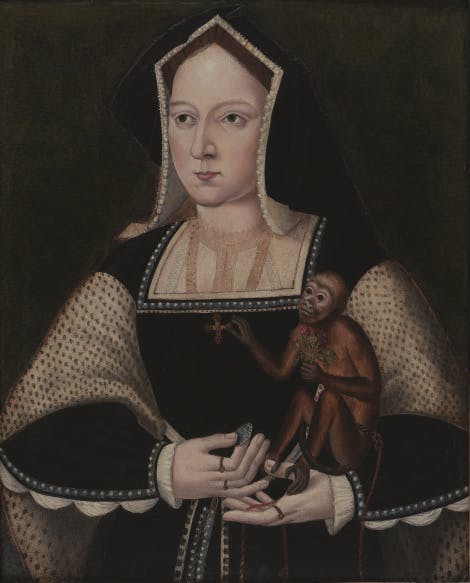
Katherine of Aragon
Katherine of Aragon was the first wife of Henry VIII. In her eyes, she was his only Queen.
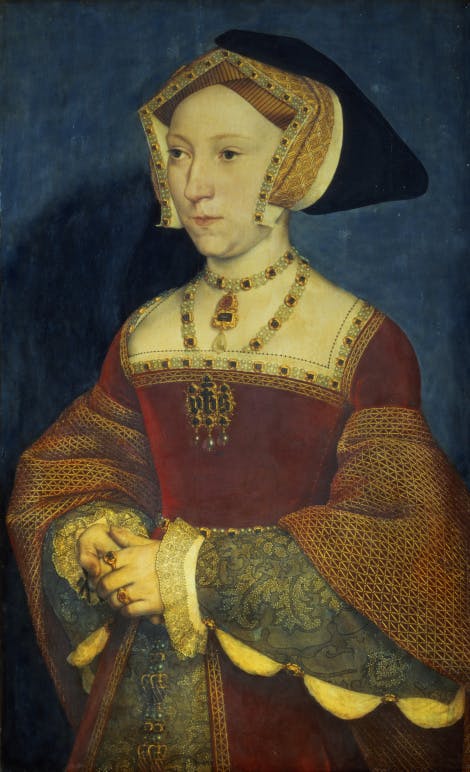
Jane Seymour
Henry VIII's favourite Queen?
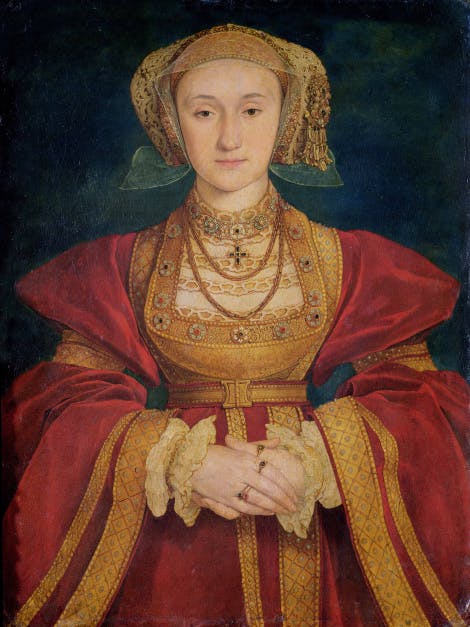
Anne of Cleves: The Great Survivor
Henry VIII's wife number four, but so much more
Explore what's on

- Things to see
Tower Green and Scaffold site
Walk in the footsteps of those condemned to execution at the Tower of London on Tower Green and the Scaffold Site.
- Open
- Tower of London
- Included in palace admission (Members go free)

- Things to see
Imprisonment at the Tower exhibition
Learn why people ended up as prisoners in the Tower of London, in the very rooms where some of them were held.
- Open
- Tower of London
- Included in palace admission (Members go free)

- Things to see
Chapel Royal of St. Peter ad Vincula
The parish church of the Tower of London holds regular religious services throughout the year.
-
Currently closed until the end of January 2026.
- Tower of London
- Included in palace admission (Members go free)
Shop online

Shop Six Wives of Henry VIII
'Divorced, Beheaded, Died: Divorced, Beheaded, Survived' - this best selling range is as colourful as it is informative.
From £15

Shop Kings & Queens of England
Discover our informative and best selling range, inspired by the incredible history of the Kings and Queens of England.
From £4.99

Katherine Parr Decoration
Handmade fabric hanging decoration of Katherine Parr, King Henry VIII's six wife.
£13

